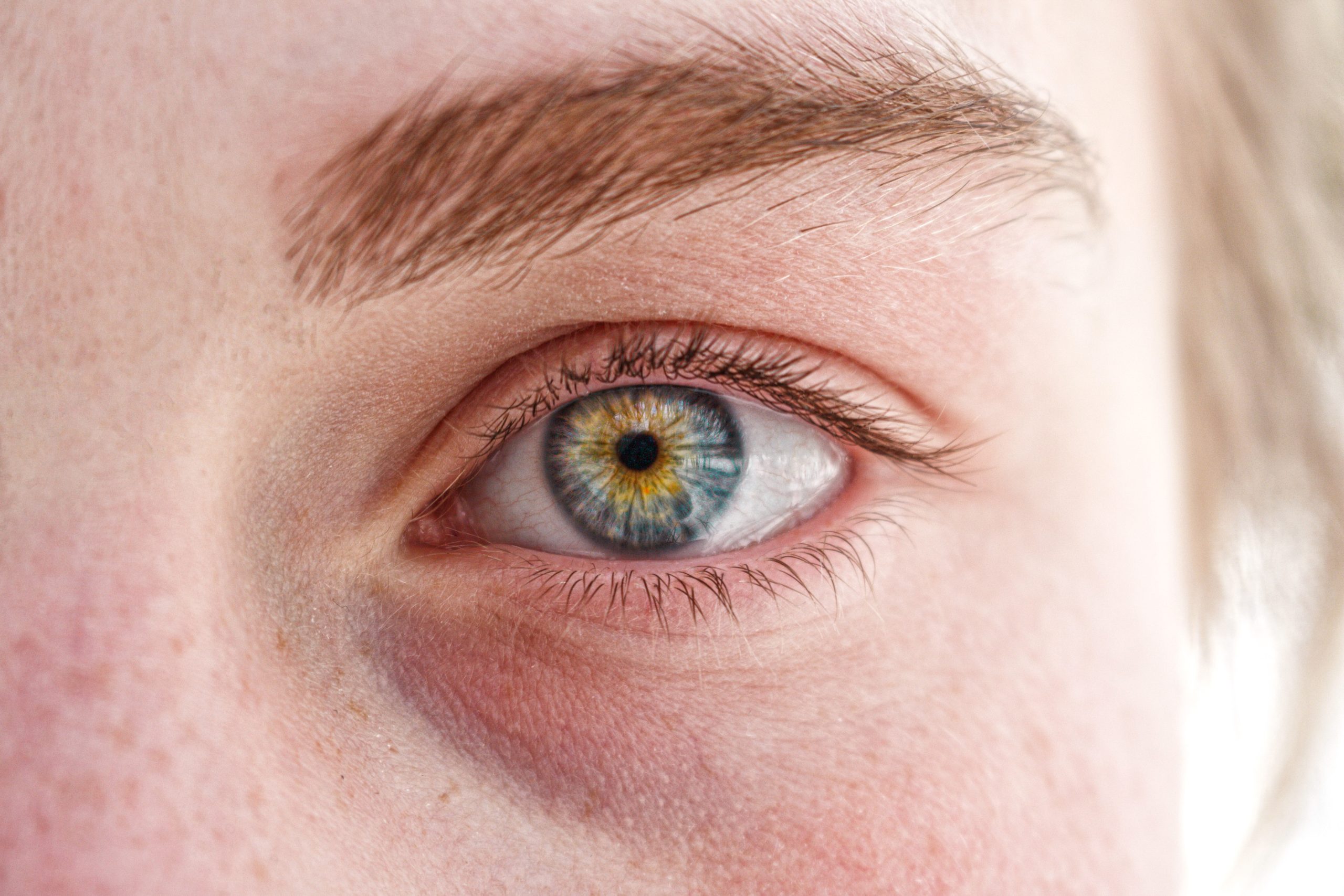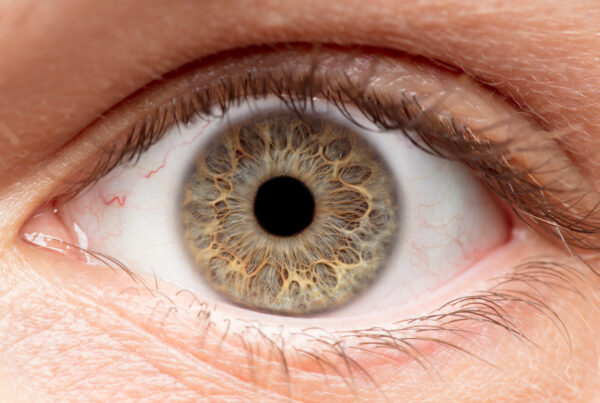
Dontcha just hate floaters?! Those little black or gray shadows that move in your vision making you think there’s a bug flying in your face! I have one that looks like a spider and freaks me out whenever it shows up. There isn’t a week that goes by that I don’t see patients in my office who start to see these creepy shadows and want to know what’s wrong and how to get rid of them. So, let’s talk about floaters.
First you need to know some things about the anatomy of your eyes, and how your eyes change with aging. Our eyes have a center pocket of jelly, called Vitreous. When we are young, the Vitreous Jelly is solid, like Jello®. There are fibers that run from one side of the retina to the other, suspended in the solid jelly. Some of them wrap around your optic nerve. When the jelly is solid, the fibers don’t move, so you don’t see them.
As we age, starting in our teenage years, the center of the jelly pocket starts to liquify, and as we get older, the liquid center gets bigger, and the outer rim of solid jelly gets thinner. At a certain age, different for everyone, the outer solid rim collapses, and caves in on the liquid center. In short eyes (farsightedness or hyperopia) this happens when you’re older. In long eyes (nearsightedness or myopia) it happens when you’re younger. If you have an injury, or some types of eye surgery, it can happen sooner. But if you live long enough, it always happens.
When that outer rim of solid jelly collapses on the liquid center, several things happen: The fibers that were suspended in the jelly pull loose from their attachment to your retina and when they do, you see a flash of light. The flashes continue until the fiber breaks loose. That’s when the fibers form a clump that floats around in the liquid jelly and casts a shadow that you can see in your vision. If the ring of fibers around your optic nerve pulls loose, you can actually see the shadow of the ring floating in your vision (Weiss Ring).
For most people, these are just an annoyance, scary but not harmful. But if a fiber pulls on a blood vessel, it can cause bleeding in your eye. That mostly just gets better without any treatment, but can be a problem for some eyes, and should be monitored as it heals.
If you have weak or thin areas (Lattice Degeneration) in your retina, mostly in people who are nearsighted (myopia), it is possible for the fiber pulling there can cause a tear or hole in your retina. If that happens, the liquid jelly can get through the hole and underneath the retina leading to a retinal detachment. It’s not common, but it could be dangerous. So, when you develop new floaters, you should have an eye examination to look for thin areas, tears, or holes that can be treated to prevent a retinal detachment. This is particularly important in people who have family members who have had retinal detachment problems.
If you have floaters, what can you do to get rid of them? The safest answer is to try to ignore them. In the past, eye doctors have felt that anything done to remove floaters was too dangerous to consider. Recently, there have been new options to consider when floaters are so annoying that you really want to eliminate them.
An Nd:YAG laser that is used to remove scar tissue after cataract surgery, has been modified to also treat floaters. While it can help, it’s not a great solution. What it does, is to basically break big floaters into lots of little floaters. But it doesn’t remove the floaters completely.
Vitrectomy is a surgery that is commonly used to completely remove the Vitreous Jelly from your eye. It is performed to remove retinal scars, fix retinal detachments, and remove blood inside the eye. It has become so safe that it can also be considered for the removal of large floaters that cause annoyance and interfere with your vision. There are certainly risks involved with any surgery, and we don’t like to take risks for just annoying floaters that can be safely ignored. Still, there are some that benefit from this surgery, and it can be considered if you feel it necessary.
The best course to take when you have newly developed floaters, is to have a complete eye exam to assure the health of your eye, and to discuss the situation and options with your eye doctor.



